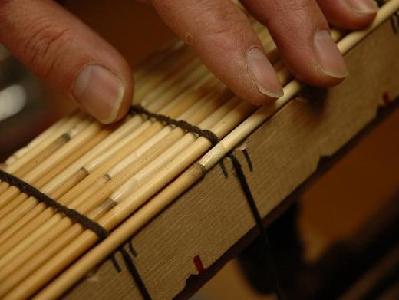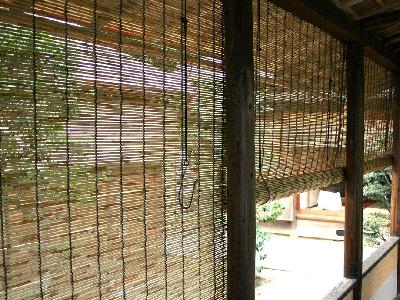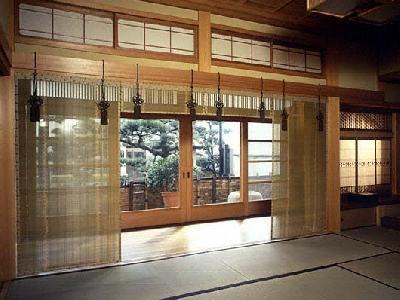|
Kyosudare is a hand-woven bamboo blind, which is known as a luxury item. Today, most of these handmade blinds are made in Kyoto. It is a traditional furnishing item to create a cool and elegant atmosphere.
The origin of Kyosudare is Misu (literally meaning “Holy Blind”), an indispensable item at the Imperial Palace in the Heian period (794-1192). Since Misu were forbidden to be used for the homes of the townspeople, they used bamboo blinds with no edgings.
Bamboo blinds have been passed down through the ages as an art craft in Kyoto, where there are many shrines, temples, restaurants and other traditional places. After the Meiji period (1868-1912), the square angular bamboo rods became rounded and Zashiki-sudare (an interior blind), which had edges on all four sides, came to be known as Kyosudare and spread nationwide.
The reed blinds, whose materials come from the eastern shore of Lake Biwa, are thought to be especially of high-quality. Its practicality as a partition and sun shade and its charming design has made it a popular product, which has been exported to the West as well.
The origin of Kyosudare is Misu (literally meaning “Holy Blind”), an indispensable item at the Imperial Palace in the Heian period (794-1192). Since Misu were forbidden to be used for the homes of the townspeople, they used bamboo blinds with no edgings.
Bamboo blinds have been passed down through the ages as an art craft in Kyoto, where there are many shrines, temples, restaurants and other traditional places. After the Meiji period (1868-1912), the square angular bamboo rods became rounded and Zashiki-sudare (an interior blind), which had edges on all four sides, came to be known as Kyosudare and spread nationwide.
The reed blinds, whose materials come from the eastern shore of Lake Biwa, are thought to be especially of high-quality. Its practicality as a partition and sun shade and its charming design has made it a popular product, which has been exported to the West as well.
| [+ADDRESS] | 
|



















